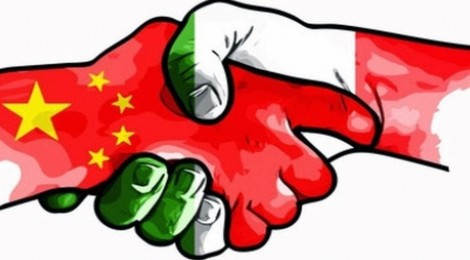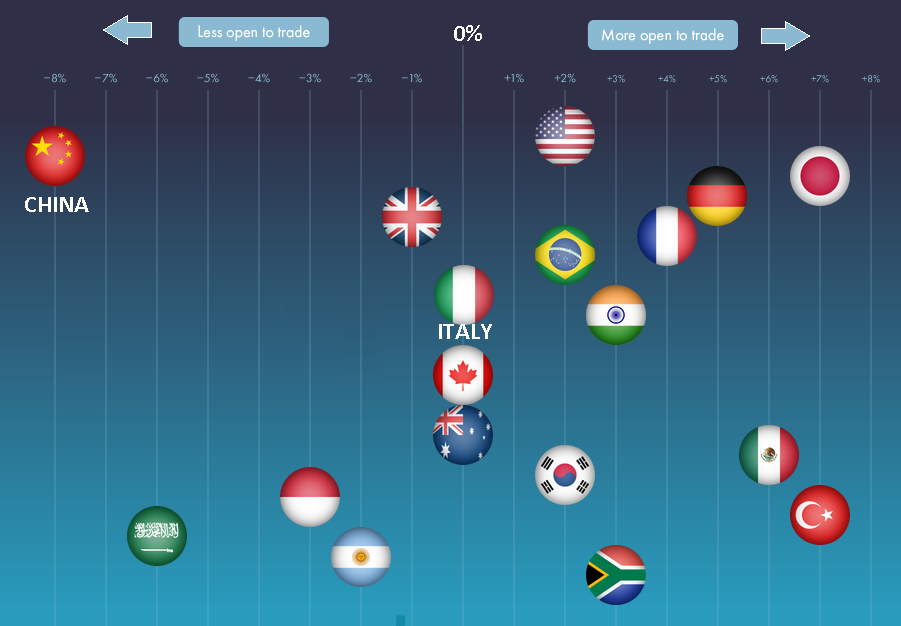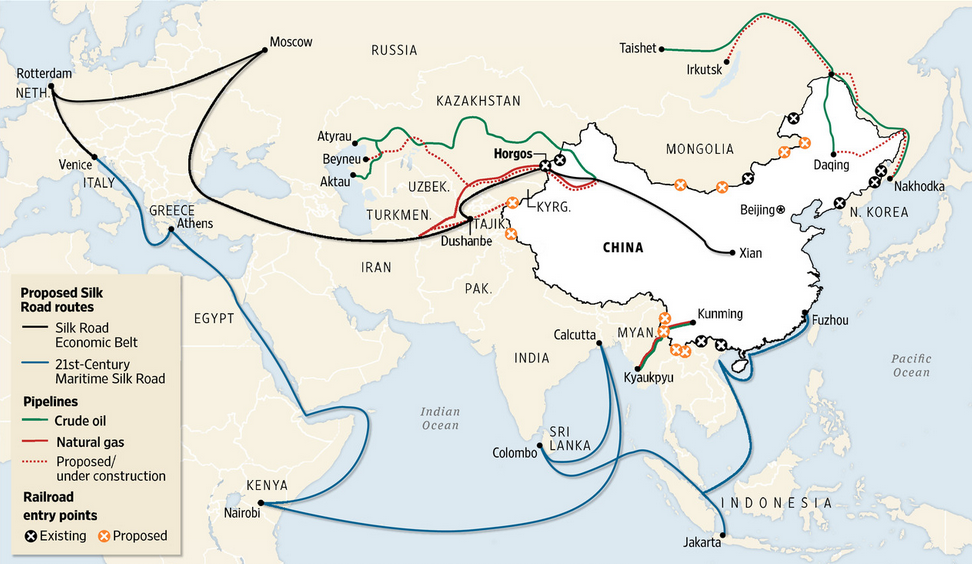
Italy and China: 45 years of diplomatic relations. What does the future look like?
China and Italy relations are gradually entering into a new juncture, distinguished by a deepening relation at all levels. The One Belt One Road strategy is opening new appealing scenarios for the Mediterranean region at large, while Chinese investments in Italy are bourgeoning. On this background, the People’s Republic of China (PRC) and Italy are celebrating 45 years of diplomatic relations, officially established on 6th November 1970. The President of Italian Senate of the Republic, Pietro Grasso, concluded this week his official visit to Beijing, where he met the highest authorities of the PRC and the representatives of Italian and Chinese institutions, enterprises, think tanks, and academia. President Grasso opened his mission with a lectio magistralis delivered to the audience of China University of Political Science and Law, by the evoking title “Ubi societas, ibi ius.[1] Law in the Sino-Italian dialogue between tradition and future”.
Mr. Grasso’s mission had been preceded by an acceleration of high-level visits between Italy and China in the last two years. Premier Matteo Renzi visited China in 2014, Ministry of Foreign Affairs Paolo Gentiloni undertook two missions in 2015, in April and September, while last November the Minister of Education Stefania Giannini headed a delegation of over 170 Italian institutions, companies and universities engaged in science and technology cooperation with China. The visit Chinese Premier Li Keqiang paid to Italy in 2014 brought about the sealing of 20 trade agreements for about €9 billion approximately, amid a general plea from both sides for closer economic cooperation and a boost of Italian export to China, the latter still accounting for only 2,6% of Italy’s total export.
 President of Italian Senate Pietro Grasso and Chinese Premier Li Keqiang met in Beijing. Source: news.xinhuanet.com
President of Italian Senate Pietro Grasso and Chinese Premier Li Keqiang met in Beijing. Source: news.xinhuanet.com
Indeed, diplomatic relations must be interpreted, for a good degree, through the lens of economic and commercial opportunities. Notwithstanding its dire economic downturn, the assets Italy has to offer are more than appealing. Advanced technological production and capabilities, a cutting-edge machinery industry, R&D potential, an integrated and advanced infrastructure network and an impressive endowment of talented human capital seeking for employment or for a better ecosystem to thrive. That makes Italy an ideal partner within the modernization effort of the Chinese production system, and – at the same time – a potential new collocation and diversification for its vibrant MNCs, whose impetus might be hindered by a slowing growth rate at home.
During the latest two years, large Chinese MNCs and state-owned companies have performed several critical investments in Italy, as well as concluded important cooperation agreements. Among the most relevant: a memorandum of understanding between Enel, Italy’s largest electricity provider, China Huaneng and China Nuclear Corporation for knowledge-sharing on smart grids development; a 500 million euro contract between Finmeccanica-Augusta Westland and Beijing Automotive Group for the provision of 50 helicopters in five years; a 5 million contract between China General Nuclear Power Group and Sogin, Italy’s state company in charge of safe management of nuclear and radioactive waste; the creation of two joint ventures between Shanghai Electric, Fondo Strategico Italiano and Ansaldo Energia, the purchase of China State Grid Corporation of 35% share in Cassa Depositi e Prestiti Reti, and, in 2015, the acquisition of a 96% share of Italy’s iconic brand Pirelli by the state-owned giant ChemChina.
The awareness of China’s growing stakes in the sensitive nodes of Italian economy may not be necessarily welcomed in a context of deep and widespread anxiety regarding the demise of domestic enterprises and shrinking employment opportunities. As emphasized in the report authored by Torino World Affairs Institute for the Italian Parliament [2] in occasion of President Grasso visit to China, a persistent and diffuse skepticism towards China permeated the public and political debate in Italy, especially from the beginning of the Nineties. The new cycle of deeper relations launched in the last two years may open a new phase of reciprocal understanding and synergy, yielding mutual benefit on both sides. However, this is an open process whose positive outcome must be jointly and consistently sought after. The Italian trade balance with China, for instance, suffers a significant deficit, while several watchers of China’s trade patterns detected a gradual intensification of protectionist barriers enacted by Beijing, especially within the years 2013-2014. China, together with Russia, India and Indonesia, contributes to what has been called an “eastward shift of protectionism in the G20”, as highlighted in a 2015’s report of the European Parliament. A recent infographic by the Economist displays China as one of the countries less open to trade in the latest 10 years, using as proxy the trade-to-GDP ratio, which has decreased consistently from 62% in 2004 to 46% in 2014.

In the latest decade (2005-2015), Italy trade openness remained consistent. China have become less open to trade for a -8%, meaning that its trade-to-GDP ratio in 2015 was 8 percentage point below the 10 year annual average. However, China is also the first target of discriminatory measures, totaling a 994 protectionist actions against its products. Source: Adapted by the author from The Economist, Open Passage, December 2015; http://growthcrossings.economist.com/global-trade-open-passage
Considerations upon foreign direct investments and trade are also behind a more marked security engagement within the larger spectrum of the Mediterranean region, both Europe and the WANA (West Asia and North Africa) region. This latter area is a sensitive corridor for a substantial amount of Chinese export and energy provisions, in a context of increasing oil dependency. Security and stability in this corridor are paramount for Beijing. The Chinese engagement in the Mediterranean area epitomizes the growing role of Beijing as a credible and responsible superpower in the international scenario, committed in the promotion of peace and stability, but also as a more assertive global investor, keen and extremely competent in protecting its interest. The One Belt One Road initiative and the creation of the Asian Infrastructure Investment Bank (AIIB) enticed a strong support across Europe. Italy ratified the adherence to AIIB this December, following UK, France and Germany; a strong signal of the great appeal of a smoother and robust Eurasian connectivity. In this geopolitical picture, Italy may be seen as a geographical gateway to Europe, a heritage of its role of terminal station of the ancient Silk Road.
Against this backdrop of growing engagement with the Eurasia region, the Italian peninsula shares with China the legacy of a one of the longest and most sophisticated civilizations in human history. Both have experienced alternate fortunes, agitated by extraordinary splendors and dramatic tumults. Explorers, scientists and missionaries have connected these two complex realities, trying to bridge the gap and build a channel of mutual respect and understanding. Past and present, culture and more pragmatic motives, reconnect today. Italy remains, to these days, an important player in China’s complex and multilayered chessboard.

Source: The Wall Street Journal, China Sees Itself at Center of New Asian Order, 9/11/2014
As remarked in the comment released to Galilei Weekly Observer by Prof Giovanni Andornino, leading author of the TWAI report and lecturer of International Relations of East Asia at Turin University, the two countries are now entering in their “Road to 50”. This expression refers to the five years that will lead to the 50° anniversary (in 2020) of the normalization of their diplomatic relations, the same year in which the European Union will see the culmination of its 2020 strategy and China will yield the outcomes of the 13° Five Years Plan (2016-2020). The intensification of dialogue between Rome and Beijing, in all its political and economic significance, will open a window of opportunity for the two nations to update the existing partnership, overcome concealed diffidence, and build a more comprehensive synergy, focused on mutual understanding and a strengthened dialogue. Within this scenario, as Prof Andornino concludes, the following years will bring new opportunities for all those entities working to bridge Italy and China, not only in the business sector, but also in the everyday more relevant academic and cultural domains.
[1] From the Latin, “where there is a society, there is law”.
[2] Torino World Affairs Institute, Cina 2020: Implicazioni Globali nel Nuovo Ciclo di Riforme e Prospettive del Partenariato Strategico con l’Italia, Osservatorio di Politica Internazionale, n. 112, Novembre 2015. Available online at: http://bit.ly/1lrAEKf (in Italian)
Further readings:
M. Marinelli, G. Andornino (editors), Italy’s Encounters with Modern China, Imperial Dreams, Strategic Ambitions, Palgrave, 2013 http://bit.ly/1OvQcE8 (in English)
Torino World Affairs Institute, Cina 2020: Implicazioni Globali nel Nuovo Ciclo di Riforme e Prospettive del Partenariato Strategico con l’Italia, Osservatorio di Politica Internazionale, n. 112, Novembre 2015. Available online at: http://bit.ly/1lrAEKf (in Italian)




